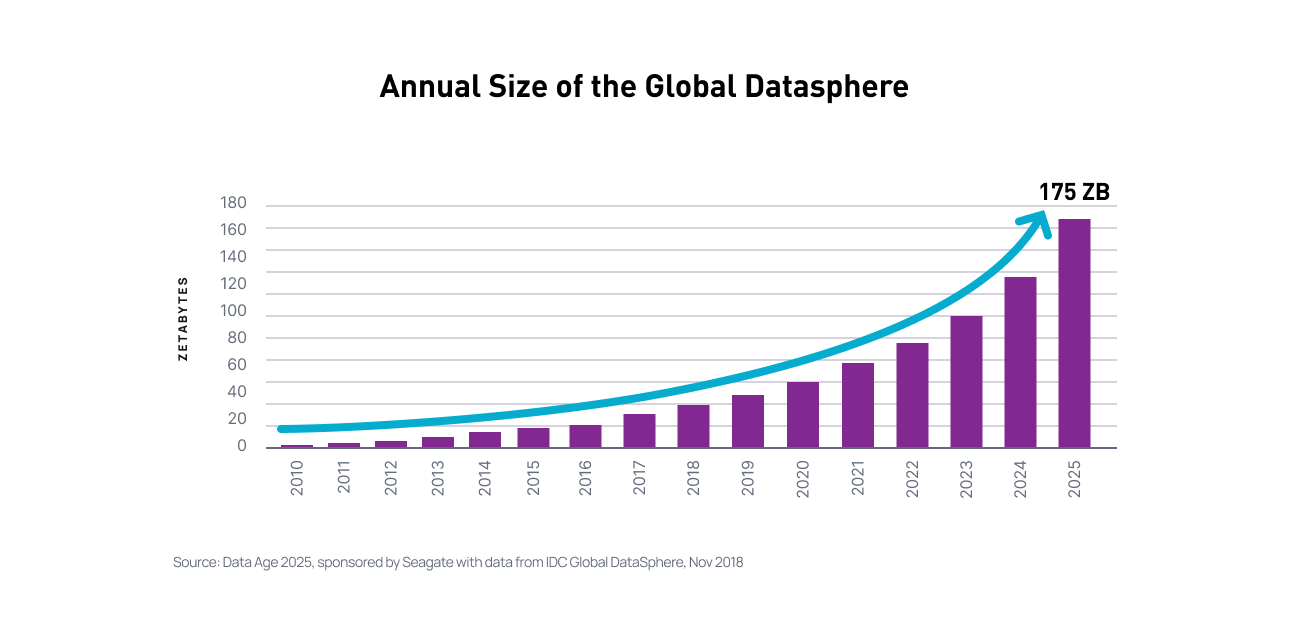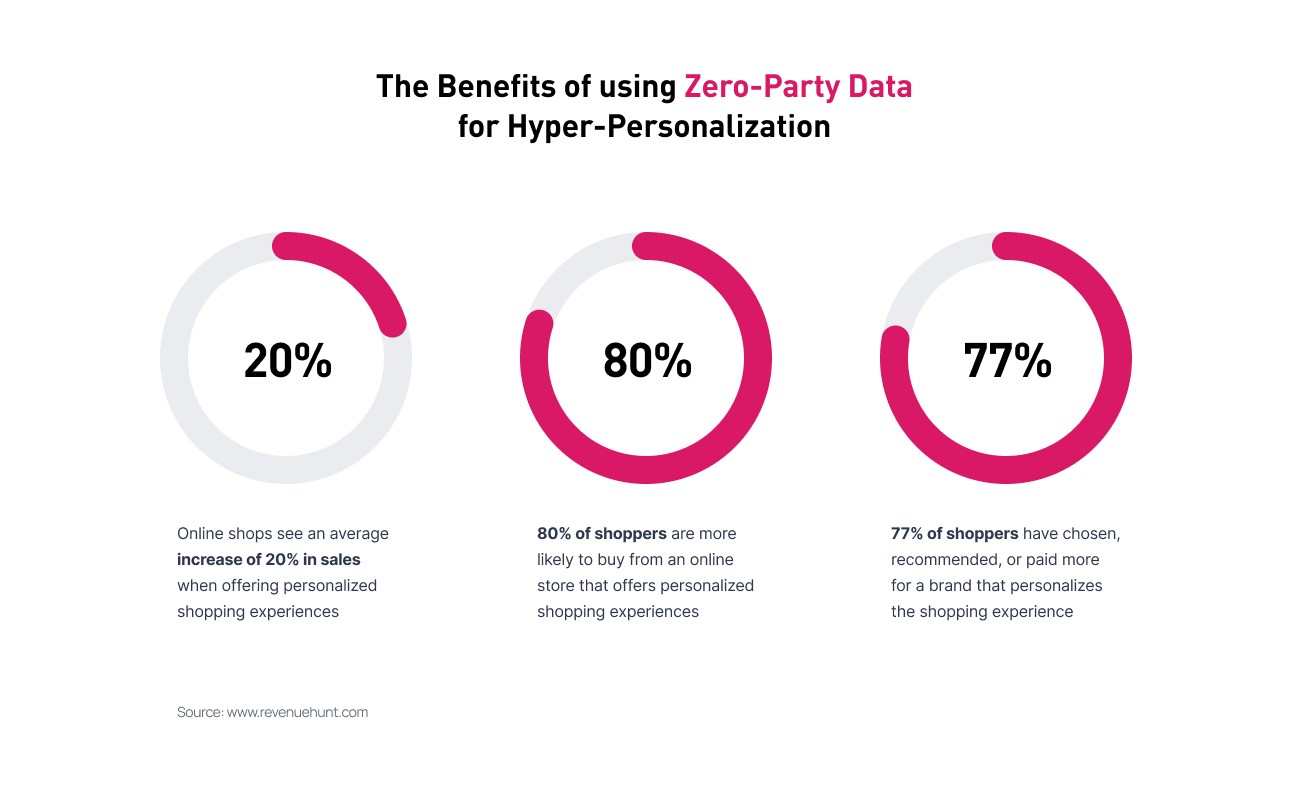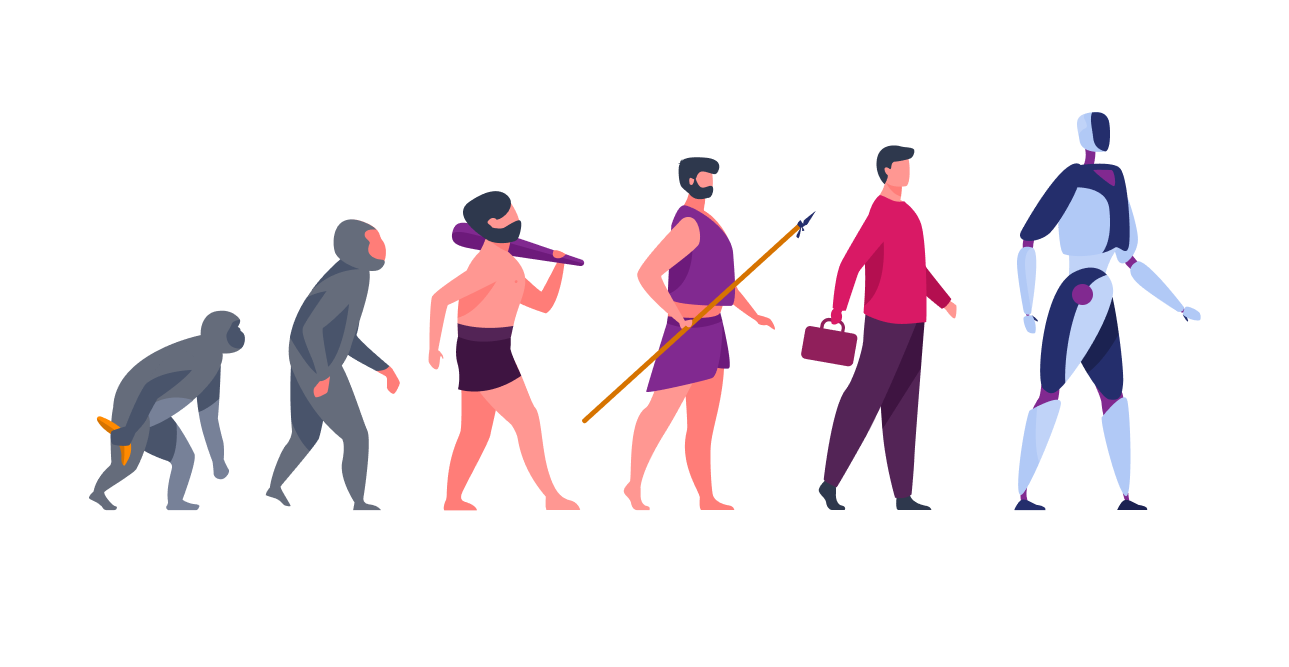Zero Party Data — Collection, Definition, Examples, and Tactics
Zero-party data is data that includes purchase intentions, preference center data, personal contexts, and how an individual wants to be recognized by a brand.
Join the DZone community and get the full member experience.
Join For FreeMore often, claims like “data are the new oil” or “data is the new electricity” appear in board meetings, research articles, and presentations, highlighting the data’s power and potential worldwide. However, with such global attention to data developments, one type of data has been largely overlooked - zero-party data.

What Is Zero-Party Data and Why Is It Important?
The term “zero-party” data was first introduced by Forrester Research in 2022, defining this type of data as data that customers intentionally and proactively share with a brand. Zero-party data can include purchase intentions, preference center data, personal contexts, and how an individual wants to be recognized by a brand. With GDPR, CASL, and CCPA guidelines, along with Google phasing out the third-party cookies support by 2023, companies across the globe are having a hard time collecting data as these regulations directly impact their ability to run effective marketing campaigns and serve customized content. These data laws make it difficult for companies to understand customers and their brand aspirations.
Why is it happening? Customers are becoming more concerned about how their data is collected and used due to the increasing number of data breaches. According to statistics, almost 19 billion data breaches were registered in 2021, and the activity of such leaks continues to grow.
The annual number of data compromises and individuals impacted in the US in the 2005-2022 period:

Due to the data regulations and increased customer concerns about personal data, zero-party data has gained momentum in the past few years. It revolutionizes how businesses interact with their customers, creating strong engagement, loyalty, and retention and playing a critical role in personalized marketing. To date, personalization has become a priority for most businesses. According to statistics, 91% of consumers are more likely to shop with brands that recognize, remember, and provide relevant offers and recommendations. One of the surveys demonstrated that 48% of all consumers have left a company’s website and made a purchase on another website or in-store simply because it was poorly curated.
Remember, the consumer gave you data for a particular purpose. Keep that purpose in mind when reusing that data to be sure you aren’t betraying the customer’s trust (Sai Koppala, CMO of SheerID).
Zero-party data is information that customers voluntarily and deliberately share with a brand. Brands can acquire it through customer profiles, quizzes, polls, website activity, or messages with customers. The data can then be used to build personalized product suggestions and targeted marketing for each customer. Collecting zero-party data is crucial for marketers as it eliminates various issues. Besides reducing the guesswork in customizing the customer experience, zero-party data also helps brands build trust with their customers, increasing their engagement and loyalty.

Zero-party data helps retain customers and improve customer experience. Many eCommerce brands, such as Sephora, Yelp, Mockingbird, and Mecca, have already incorporated it into their companies and are seeing the benefits.
Zero-party data is also crucial for companies looking to utilize the power of artificial intelligence (AI). According to an article investigating the role of small data in AI, more than three-quarters of large companies today are pursuing projects that involve neural networks or deep learning systems trained on huge data repositories. However, many of the most valuable datasets in organizations are quite small. As they need more volume and velocity of big data, these datasets are often overlooked and unconnected to enterprise-wide IT innovation initiatives. The article’s authors argue that small data can play a significant role in AI coping with this problem. Zero-party data is a vital part of this, as it is high-quality, relevant data that can be used to train AI systems for organizations that don’t have massive amounts of customer data.
By using zero-party data, companies can train their AI systems to predict customer behavior more accurately, improving their marketing and sales efforts and creating a more personalized customer experience.
Zero-Party, First-Party, Second-Party, and Third-Party Data. What Is the Difference?
To date, with nearly 70% of the world’s population being online, data is king. There are various ways to collect and use data, such as first-, second-, third-, and zero-party data. How does zero-party data compare to these types, and how much does it differ in improving customer acquisition and marketing improvement? Below, we’ll discuss the differences between the 1st, 2nd, 3rd, and zero-party data and check how zero-party data benefits these data types.
Internet users as a percentage of the global population:

In God, we trust; all others bring data (W. Edwards Deming).
First-Party Data
First-party data is the most readily available data for all business owners. It is the information you’ve collected firsthand from customers on your website. First-party data may include purchase history, subscription periods, and discounts used. It also often provides customer behavior on a website, like frequency of clicks, length of time on a page, what items are being scrolled by, and which links are being interacted with most.
This data directly reflects the people interested in your products or services and, in most cases, is used for retargeting. First-party data can also be used to predict trends and draw conclusions about customer preferences based on behavioral analytics and purchase history and is a foundation of RFM analysis that allows eCommerce brands to segment and rank their customers by value over a specific period, using three dimensions:
- Recency (how recently someone purchased);
- Frequency (how frequently someone purchased);
- Monetary (how much they spent).
Second-Party Data
In contrast to first-party data, this type of data is obtained secondhand. Second-party data is the first-party data of one brand that is then sold to another company, aimed at bringing in customers based on specific data. This data isn’t openly available. You can seek out a partner or purchase it, which is often more efficient as it’s instantaneous. The biggest hurdle to acquiring this data is building relationships and dealing with strategic business partners. You should double-check the data before purchasing and ensure it is relevant to your business.
Second-party data tends to be better quality than third-party data but is smaller in scope. It works best when you know what kind of marketing growth and new customer demographics you’re looking for.
Third-Party Data
Third-party data is collected from aggregators solely in the business of collecting data and selling it to other interested parties or gaining by running tracking ads with companies like Instagram or Facebook. If you’re looking for volume, third-party data is a great choice. By leveraging this type of data, you get the information that isn’t available to just you or your partner (as with second-party data). Third-party data is accessible to anyone who can pay for it and tends to be lower quality and less actionable.
Third-party data has been a cornerstone of the e-commerce business for many years. The most helpful way to use it is to look at the trends and patterns by analyzing the first-party data and then comparing the results with the third-party data you’ve obtained, leveraging it to supplement your marketing strategy. This data type is predicted to become less available and valuable as time passes and privacy laws and practices tighten.
Zero-Party Data
Zero-party data is similar to first-party data and used to be considered its subset. However, zero-party data has one key difference — you go directly to the customers and ask them upfront for their insights. In the case of first-party data, customers permit you to collect information about them. At the same time, they browse your site, and it’s still an indirect way to determine what they want or need, as you’re inferring it from their online behavior. With zero-party data, they control how their data is collected and know it’ll be used to personalize their user experience better, so they’re more willing to provide it.
Another key difference between first- and zero-party data is data ownership. While you own first-party data, you don’t own zero-party data. Your customers are the owners of this information, and you can’t sell this data without their consent.
The End of Third-Party Cookies. What Will Marketing Look Like?
Cookies have contributed to the growth and success of many businesses across the internet and are now on the edge of “Cookiepocalypse.” The end of the third-party cookies era has been on the horizon for years due to security and privacy concerns. According to a Google announcement in 2021, it will stop using third-party cookies in Chrome, and by the end of 2024, new tracking technologies will replace them. What does it mean for marketers?
Many advertisers worldwide have relied on third-party cookies since the 1990s as this technology enabled them to deliver targeted and relevant ads to users and collect valuable customer data. Given the global popularity of Google Chrome with its 2.65 billion users worldwide, such a transition will significantly impact the advertising industry, changing how companies serve personalized ads and reach customers.
Google isn’t the first company to phase-out cookies due to privacy concerns. Mozilla’s Firefox started blocking third-party cookies in 2019, followed by Apple, which eliminated cookies from Safari in 2020. Although generally safe, third-party cookies potentially represent a security risk if, for example, the cookie isn’t secured properly, the data is shared without authorization, or includes personally identifiable information. Digital advertising relies on third-party cookies to track website activity. With Google’s decision to end cookies, businesses need to adjust their marketing strategies to use customer-provided data directly.
Third-party cookies aren’t the only way to gather customer data and provide users with targeted advertising. There are alternatives to cookies that can also help with online marketing efforts. First-party cookies and zero-party data are considered the most trustworthy and relevant approaches to discovering the target audience, purchase process, brand engagement, and best ways to reach customers. With first-party data, a website can collect customer data and use it to predict better what a customer might purchase next, improving the user experience. At the same time, zero-party data is considered the best option for businesses to maintain quality marketing efforts and earn customer trust through transparency. In a cookie-less world, this technology will allow brands to capture the audience’s intentions, preferences, interests, and motivations, creating a truly personalized experience for each customer.
How to Launch a Successful Zero-Party Data Strategy?
Customers worldwide are willing to share data with brands in exchange for an experience customized to their wants and needs. However, a pivotal moment in this concept of value exchange is that customers want to be in control of what kind of data is shared to get this personalized experience with a company.
Zero-party data eliminates the “creepiness” that may occur when a customer realizes he didn’t provide a company with a piece of personal information and learns that the brand has that data through marketing efforts. Zero-party data also helps to solve the personalization-and-privacy paradox, allowing marketers to collect data that consumers willfully share directly with them.
The main steps to launching a successful zero-party strategy include the following:
- Registration. The first step to targeting the audience and offering it a personalized experience is encouraging it to register on your app or website. This strategy works well on new users who want to start using your products or services and is widely applied by brands like Babbel to collect zero-party data from their customers.
- Website. Brands like Wistia offer options to users to choose what type of communication they would like to receive from a brand, therefore collecting zero-party data. This information helps companies to provide customized services to their clients.
- Emails. Some brands capture zero-party data by asking their customers about their birthday or anniversary date in exchange for vouchers and discounts. Westside clothing brand asks for the birth date of each of its customers and, when the date arrives, sends them personalized discount coupons.
- Social Media. Many brands use social networks to collect zero-party data. For example, companies like Adidas and Nike commonly use Instagram polls to learn customer preferences.
- In-store. Collecting zero-party data is also possible in-store. To get the data, companies like Harrods and Macy’s offer their customers to sign a loyalty card, which collects the points from each purchase. In the future, they can exchange the points for cash or other discounts in the brand stores.
- Preference Center. Brands can also create an email preference center, allowing customers to select whatever they want from the brand.
Future of Zero-Party Data

While business owners once sold products to consumers based on offline data, the focus is now on the online marketplace. To date, the web is actively moving toward greater interactivity and participation. Companies like Meta are aiming to take advantage of this trend, offering users new ways to interact with it. A heavy digital presence makes its corrections, making zero-party data a critical part of the new interactive paradigm, allowing people to share their data to create more engaging experiences willingly.
Zero-party data offers personalized marketing that both brands and customers can be comfortable with. This data type allows companies to respect their customers’ privacy while providing the personalized experience they expect. Zero-party data is built upon trust and transparency and can be an excellent relationship builder for customers and brands, allowing companies to meet and exceed customer expectations while respecting their privacy concerns.
The future of personalized marketing is about finding a balance between personalization and privacy, and zero-party data plays a crucial role in it.
Published at DZone with permission of Anastasiia Komendantova. See the original article here.
Opinions expressed by DZone contributors are their own.

Comments